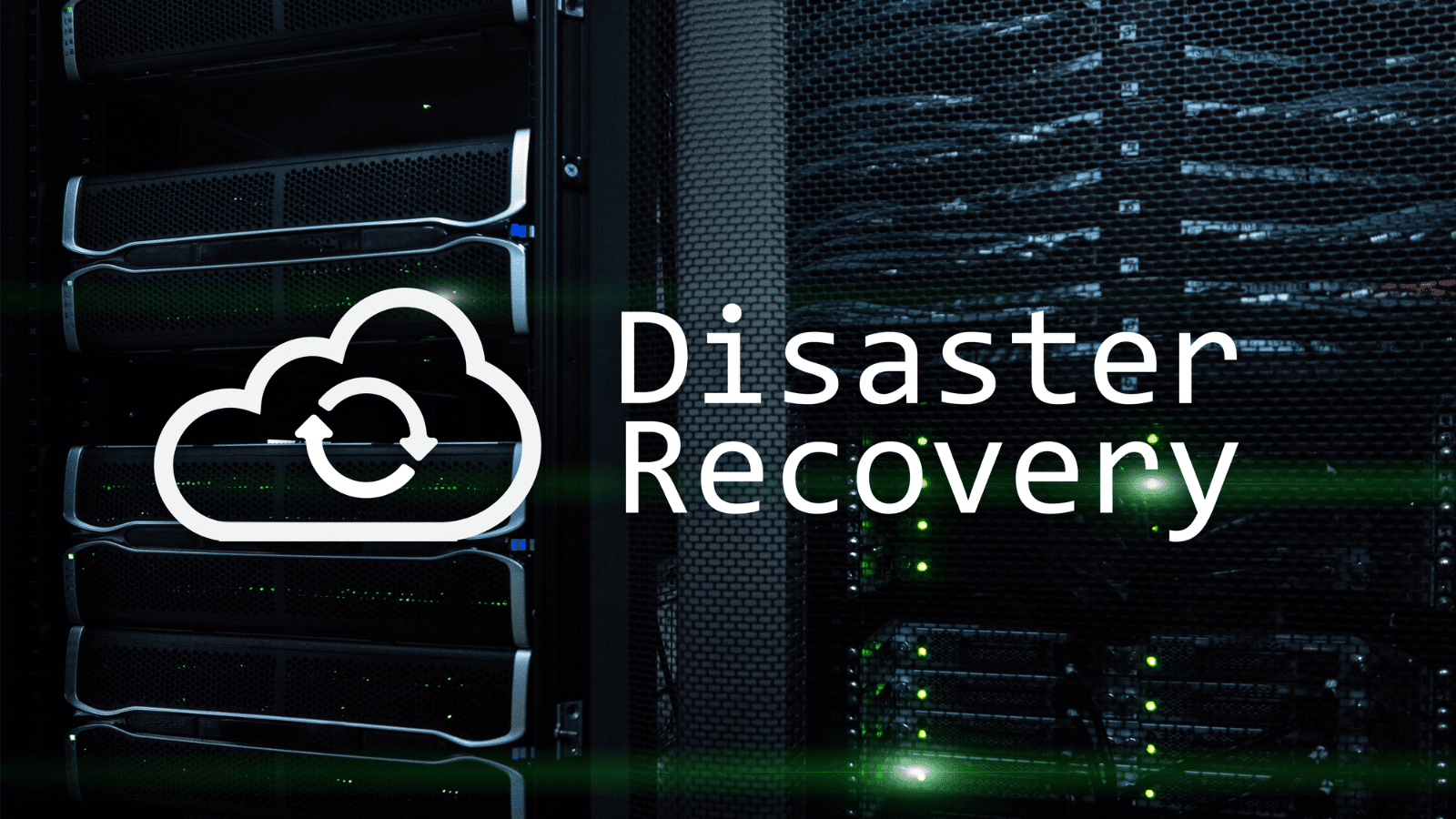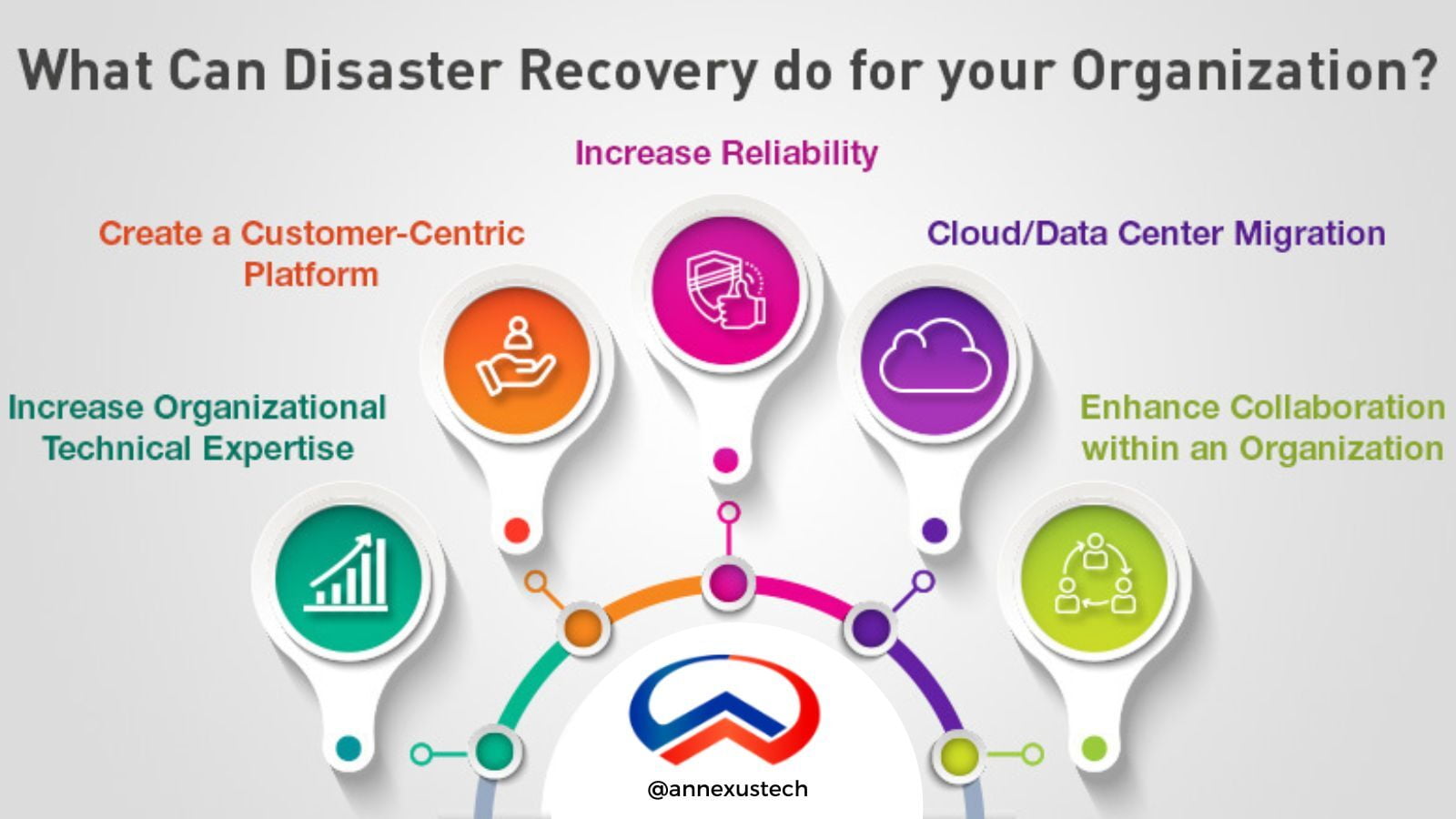
Disaster Recovery (DR) is a critical process for every business, regardless of size or industry. In today's digital world, organizations depend heavily on technology to run their operations. Any unplanned outage, whether caused by a natural disaster, cyber attack, or human error, can result in significant disruptions to the business. This is where Disaster Recovery comes into play - it is the process of restoring critical IT systems and operations after a disruptive event. In the event of a disaster, businesses can experience downtime, data loss, and a loss of revenue. Therefore, having an IT Disaster Recovery Plan is essential to minimize the impact of a disaster and ensure business continuity.
Statistics show that the cost of IT downtime is increasing every year. According to a survey conducted by the Disaster Recovery Preparedness Council, the average cost of IT downtime per hour for a business is $270,000. Moreover, 90% of companies that experience a significant data loss are forced to shut down within two years. These statistics clearly highlight the importance of having a Disaster Recovery Plan in place.
What can Disaster Recovery do?

Disaster Recovery (DR) is essential for business continuity and can offer numerous benefits to organizations. With DR, you can increase your technical expertise by identifying potential risks and vulnerabilities, building more resilient systems, and developing strategies to mitigate them.
DR can also create a customer-centric platform by maintaining your business' operations during a disaster, minimizing disruptions to your customers and ensuring their continued confidence and satisfaction. Additionally, DR can increase reliability, reduce downtime or data loss, and help with cloud and datacenter migration.
Lastly, DR can enhance collaboration within your organization by involving all stakeholders in the planning process, resulting in a more cohesive and effective team during a crisis.
How To Create Disaster Recovery Plan
Disasters can strike at any time, and businesses need to be prepared to respond to them. One of the most important steps a business can take is to create a Disaster Recovery Plan (DRP). A DRP is a set of procedures and policies that outline how a business will respond to a disruptive event and recover critical systems and data. In this blog post, we'll go over the steps to create a DRP.
Define the Scope and Objectives
The first step in creating a DRP is to define the scope and objectives. This includes identifying critical business functions, systems, and data that require protection and determining the Recovery Time Objectives (RTOs) and Recovery Point Objectives (RPOs) for each. This step will help ensure that the DRP is tailored to the specific needs of the business.
Conduct a Risk Assessment
The next step is to conduct a Risk Assessment to identify potential threats and vulnerabilities to the organization. This includes natural disasters, cyber attacks, and other potential disruptions. The Risk Assessment will help identify the most likely and impactful threats and vulnerabilities that the DRP should address.
Develop a Response Strategy
Based on the results of the risk assessment, develop a response strategy for each potential threat. This should include a plan of action for how to respond in the event of a disaster and how to restore critical systems and data. This step will help ensure that the DRP is tailored to specific threats and vulnerabilities.
Establish Recovery Procedures
Develop procedures for recovering critical systems and data. This includes backup and recovery procedures, as well as procedures for restoring systems and applications. The recovery procedures should be designed to minimize the impact of a disruptive event on business operations.
Establish Communication and Notification Procedures
Establish communication and notification procedures to ensure that all stakeholders are informed of a disaster and that the DRP is activated in a timely manner. This includes defining the roles and responsibilities of the DR team and business units. Effective communication and notification procedures will help ensure that the DRP is executed successfully.
Develop Testing and Training Procedures
Develop testing and training procedures to ensure that the DRP is effective and can be executed successfully. This includes conducting regular tests of the DRP and training the DR Team and Business Units on their roles and responsibilities. Regular testing and training will help ensure that the DRP remains up-to-date and effective.
Document and Review the DRP
Document the DRP and ensure that it is reviewed and updated regularly. This includes ensuring that the plan is up-to-date and reflects any changes in the organization's environment or operations. Regular review and updates will help ensure that the DRP remains relevant and effective.
Creating a Disaster Recovery Plan is a critical step in ensuring that a business can respond to and recover from a disruptive event. By following the steps outlined in this post, businesses can develop an effective DRP that is tailored to their specific needs and environment. Remember, a well-planned and executed DRP can help minimize the impact of a disruptive event on business operations, and ensure continuity of critical business functions.
Disaster Recovery 101: Best Practices for Organizations
Identify your most critical assets: It is important to identify your most critical assets, such as hardware, software, data, and staff, and prioritize their recovery. This will help you allocate resources and develop recovery strategies that are specific to the most important areas of your business.
Choose a secondary data center: One of the best ways to ensure continuity of operations in the event of a disaster is to have a secondary data center. This can be a physical location, or it can be cloud-based. Having a secondary data center ensures that critical systems and data can be restored quickly and efficiently.
Invest in redundancy: Redundancy is a key component of disaster recovery. This means having multiple backups of critical systems and data, as well as redundancies in hardware, software, and staff. This helps to minimize the impact of a disruptive event on business operations.
Develop a Communication Plan: In the event of a disaster, it's essential to have a communication plan that outlines how the company will communicate with employees, customers, and other stakeholders. This plan should include procedures for notifying key personnel, updating the website and social media, and sending out alerts via email, text, or phone.
Review and test your plan regularly: A disaster recovery plan is only effective if it is up-to-date and tested regularly. This ensures that the plan remains relevant and effective, and that all staff are trained and prepared to execute it. Regular reviews and tests should be conducted to identify weaknesses, areas for improvement, and new threats or vulnerabilities.
Partner with a DRSP: Partnering with a Disaster Recovery Service Provider (DRSP) can provide small businesses with expert assistance in developing and implementing a Disaster Recovery Plan. DRSPs offer a range of services, including consulting and assessment, disaster recovery planning and implementation, backup and recovery services, and continuous monitoring and support.
By following these tips, enterprises and organizations can develop a comprehensive disaster recovery plan that is tailored to their specific needs and environment. Remember, a well-planned and executed Disaster Recovery Plan can help minimize the impact of a disruptive event on business operations, and ensure continuity of critical business functions.
Disaster Recovery Service Providers in the Caribbean
In the Caribbean, businesses are also at risk of experiencing disruptions due to natural disasters, such as hurricanes and floods. In fact, a recent report by the Economic Commission for Latin America and the Caribbean (ECLAC) revealed that Jamaica is one of the countries in the Caribbean most affected by natural disasters. The report states that between 1970 and 2018, Jamaica experienced 121 natural disasters, resulting in 1,002 deaths and losses of over US $1.6 billion. These numbers underscore the need for businesses in Jamaica to have a robust Disaster Recovery Plan in place.
In addition to natural disasters, businesses in the Caribbean are also vulnerable to cyber attacks. According to a report by the Jamaica Cyber Incident Response Team (Ja-CIRT), there were 346 reported cyber incidents in Jamaica in 2020, which is a 64% increase from the previous year. These incidents included phishing attacks, ransomware, and website defacements. And this was just Jamaica; so just imagine the other islands that comprise the Caribbean! Having a Disaster Recovery Plan that includes cyber security measures is essential for businesses in the Caribbean to protect their systems and data from cyber threats.
Disaster Recovery is a critical process for any business or organization, but it can be complex and time-consuming. Fortunately, there are Disaster Recovery Service Providers (DRSPs) that can assist businesses with the creation and implementation of their DRP, as well as provide ongoing support in the event of a disruptive event.
DRSPs offer a range of services that can help businesses effectively plan and execute their DRP. These services include:
Consulting and Assessment
DRSPs can provide consulting and assessment services to help businesses identify potential threats and vulnerabilities, develop response strategies, and establish recovery procedures. These services can help ensure that the DRP is tailored to the specific needs of the business.
Disaster Recovery Planning and Implementation
DRSPs can assist businesses with the planning and implementation of their DRP. This includes developing and documenting procedures for recovering critical systems and data, establishing communication and notification procedures, and developing testing and training procedures. DRSPs can also assist with the selection and implementation of backup and recovery solutions.
Backup and Recovery Services
DRSPs can provide backup and recovery services to ensure that critical systems and data are protected in the event of a disruptive event. This includes offsite backup and recovery, as well as the restoration of critical systems and data.
Continuous Monitoring and Support
DRSPs can provide continuous monitoring and support to ensure that the DRP is up-to-date and effective. This includes regular testing of the DRP and the provision of ongoing support in the event of a disruptive event.
According to a report by the Jamaica Observer, the global disaster recovery as a service (DRaaS) market was valued at $2.2 billion in 2020, and is expected to reach $14.7 billion by 2026. This growth is driven by the increasing need for businesses to protect their critical systems and data from potential disruptions..
One of the leading Disaster Recovery Service Providers in the Caribbean is . They offer comprehensive Disaster Recovery Solutions that are customized to meet the unique needs of each business. With Annexus Technologies, businesses can benefit from their state-of-the-art Disaster Recovery Infrastructure and expertise. They provide a range of services, including data backup and recovery, network redundancy, and business continuity planning. With Annexus Technologies, businesses can rest assured that their critical systems and data are safe and can be recovered quickly in the event of a disaster.
Contact us today @ (754) 960-0259 or email us sales@annexustech.com.
